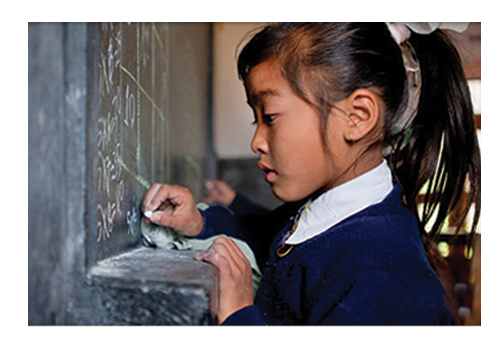The sex trafficking of Nepali girls was not well understood when this scourge caught my attention in the early 1990s. I had been traveling to Asia for more than a decade, keeping up with a growing portfolio of investments, getting a close look at projects supported by our American Himalayan Foundation, and hearing from the Dalai Lama about pressing needs of the Tibetan people.
Today sex trafficking in Nepal is a staggering humanitarian crisis, and increasingly so in the U.S. and other developed countries. UNICEF estimated in 2014 that seven thousand Nepali women and girls are trafficked into India annually, and as many as two hundred thousand may be enslaved in India’s brothels. Why Nepali girls? Brothel operators believe Nepali girls are more compliant, speaking little Hindi and being stranded so far from home. For these wretched operators, it’s just business, hugely profitable business.
Nepali girls in these brothels, often as young as twelve, are forced to have sex fifteen or twenty times a day with adult men, occasionally even more. Most are beaten into submission, scarred physically and mentally from horrific daily abuse. Once trapped in this life of slavery, most find it impossible to escape. Many die before they are twenty years old.
Aruna Uprety, a young Nepali physician investigating Mumbai brothels, was staggered by the horror she found. “It’s too late for us,” she was told repeatedly by girls she met. “If we had known anything, if we had been able to go to school and learn and work, we would never have landed here. Please, keep this from happening to other girls.”
Aruna understood, perhaps too well. Her mother was married when only ten years old to a man who became a prominent lawyer, but she was never allowed to go to school. Aruna never forgot that her mother once dreamed that Aruna and her two siblings would get a good education.
Dr. Uprety soon opened a safe house in Nepal for girls rescued from traffickers, then enrolled a few dozen girls in a rural school. Here was a passionate entrepreneur with a great vision: keep girls safe from traffickers by keeping them in school. What she lacked was resources. When I first met her in those days, I said, “Aruna, you need to clone yourself.”
Now after twenty years, her vision is wonderful reality. More than 17,000 girls from Nepal’s poorest families have been educated in her schools, including nearly 15,000 enrolled in classes this fall. From early grades through high school. It costs only $100 to fund a child’s entire year in school. None of these girls has been lost to traffickers.
Aruna’s program is the largest of 175 projects supported by our foundation. We call it STOP Girl Trafficking, and it provides an important lesson in global development: people in local communities can and want to protect even the most vulnerable among them. What they require is the vision of a dedicated leader and sufficient training and resources to get things done.


Leave a Reply